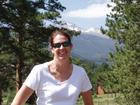David Whitehair from OCLC was the first presenter and the first topic of discussion was recent changes to Connexion. He began with enhancements that are available to users of both the client version and the web version:
- WorldCat records now include both 13 digit and 10 digit ISBNs.
- When the database hits 100,000,000 records (which will happen quite soon, go to www.oclc.org/worldcat/grow.htm to watch the progress) since a record is added about every 7 seconds. They've upgraded the system to accommodate the additional digits required by this growth.
- Bibliographic Formats and Standards has been upgraded to reflect MARC Update changes.
- Since OCLC merged with RLG loading of records from the RLG Union Catalog are being loaded into WorldCat; the load is in progress (there are about 50 million records in all) and about 15% of them are records that represent items new to WorldCat.
- the ability to extract metadata from MP3 files
- the ability to view superseded version of LC name and subject authority records (read only)
- guided entry for archival materials provides guidance for the entry of fields 541 and 583
- the 035 field includes the OCLC control number
- a link has been added that allows you to link to a library catalog to view the patron view of a record
- version 1.60 will be discontinued April 2007
- this version won't work with Windows Vista
- it includes a new quick search box at the top of the screen
- they've added a quick tools drop down box to quickly enter common strings of text (now one no longer has to create a macro that is tied to a particular key or combination of keys in order to enter a common string of text)
- they've added scripts for cataloging in foreign languages (Bengali and Devanagari are the most recent language scripts added, scripts for other non-latin languages already in place include Arabic, Chinese, Cyrillic, Greek, Hebrew, Japanese, Korean, Tamil, and Thai)
Then he covered OCLC enhancements that aren't strictly Connexion enhancements:
- OCLC Terminologies Services (see www.oclc.org/terminologies for a tutorial)
- user statistics are available for no additional charge
- they've also made some enhancements to CatExpress (a simple cataloging tooused most often in small public libraries and school libraries), see www.oclc.org/catexpress.
- z39.50 catalogers now have access to the authority file and non-latin scripts
- OCLC e-serials holdings service was debuted.
- they'll take a file from Serials Solutions, TDNet, or Ebsco and set and maintain title level holdings (these features are free of charge), this would be useful if you're using OCLC's collection development tools
- coming soon is an option to receive MARC records for your e-holdings (however, there will be a charge for this service)
- WorldCat Selection is a new service that OCLC created for acquisitions staff that alerts selectors and enables them to download MARC records for recent purchases
There's a new MARC update coming in 2007 as well.
Their Content Cooperative Pilot project continues, see www.oclc.org/productworks/contentcooperative for more info.
They've also partnered with several book jobbers (Baker & Taylor, YBP, Majors) to create a service that will deliver MARC records customized to your library for newly purchased items.
Geoffrey Skinner from Sonoma State University presented on "Interactive Searching in Connexion" in which he spoke about how they use OCLC's batch load process to upgrade brief bib records.
Sonoma State is an Innovative Library using their ERM module. It's been 1 1/2 years since they brought up ERM and updated their holdings so they were faced with a large number of brief records. The process included (1) downloading data from brief serial records containing e-issns, (2) creating a local Connexion file into which to upload the records, (3) review error report and decide whether to correct the records that failed to loads in the text files by hand, (4) upload the corrected records.
He describes it as an iterative process that ultimately results in local records that include appropriate access points including subject headings and more complete holdings records in WorldCat.
[To me this sounds like a tremendously time consuming project that would consume a great deal of staff time. But I tend to question the benefit of including e-resource records in the local catalog anyway since we use a number of mechanisms for locating journals including a link resolver and an a-to-z list. In addition, at my library we've recently reviewed our e-resources contracts to decide which vendors/publishers allow or disallow use of articles in their collections for things like ILL, e-reserves, and inclusion in course-packs and course delivery software. Many do but some do not and, for those who do not, I'm not quite sure I see the benefit of maintaining precise holdings in WorldCat. Especially given the dearth of more high priority projects. If anyone sees some benefit that I haven't I'd be interested in hearing from you.]

